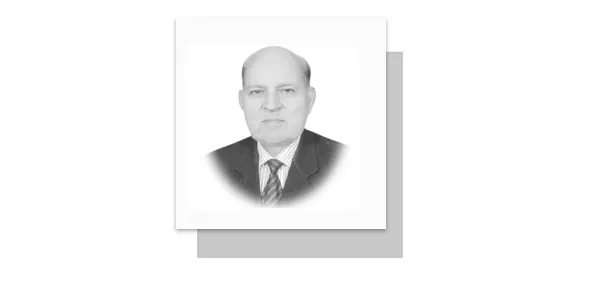ACCORDING to the Reuters, the acronym BRIC, which did not initially include South Africa, was coined in 2001 by then Goldman Sachs chief economist Jim O’Neill in a research paper that underlined the growth potential of Brazil, Russia, India and China, as the world’s leading emerging economies. The Bloc was founded as an informal club in 2009.South Africa was accepted as a member in 2010. It has its headquarters at the BRICS tower in Shanghai, China. Since 2009, the heads of state and government of the member nations convene annually with each nation taking up a one-year rotating chairmanship of the group.
According to Learn CANA dated 6 July 2022, the BRICS accounts for 41% of the world’s population, 30% of the land area, 24% of global GDP and 16% of international trade. Since its first summit in 2009, BRICS has decided to cooperate in the political, economic/financial, business, security, health, science, technology and innovation and people-to-people contacts, areas. The major cooperation outcomes so far, are being stated.
In the economic field, the New Development Bank (NDB), created by the BRICS member countries, with the purpose of mobilising resources for infrastructure and sustainable development projects in emerging markets and developing countries (EMDCs), is one of the most concrete successes of the grouping. As per the German Institute of Development and Sustainability (IDOS), the NDB will have a fairly large capital contribution, initially of US$ 50 billion, from BRICS countries and can grow up to $100 billion with contributions from other countries.
Furthermore, with China’s initiative, the Asian Infrastructure Investment Bank (AIIB) was created in 2016, with 57 founding members, including all major European economies (such as Germany, France and the United Kingdom), with the largest share of the capital being contributed by China. Pakistan is also one of the founding members of the AIIB. At present, there are 105 members of AIIB. The AIIB invests in sustainable infrastructure and development projects in its member countries.
According to the European Parliament’ Think Tank, the creation of the BRICS’ Contingency Reserve Arrangement (CRA), is aimed at helping member countries in the event of crises in their balance of payments. The overall volume of the Contingent Reserve Arrangement is $100 billion with China contributing $41 billion, Brazil, India and Russia $18 billion each, and South Africa $5 billion.
In the fields of science, technology and innovation, there are eleven working groups, dealing with a range of subjects. The BRICS member countries also have a plan for laying an optical fibre submarine communications cable system to carry telecommunications between the BRICS countries, known as the BRICS Cable, and for cooperation in the communications and information technology sectors,
Since 2022, the group has sought to expand membership. According to the Reuters dated 22 August 2023, over 40 countries, including Iran, Saudi Arabia, United Arab Emirates, Argentina, Algeria, Bolivia, Indonesia, Egypt, Ethiopia, Cuba, Democratic Republic of Congo, Comoros, Gabon, and Kazakhstan have expressed interest in joining the forum, according to 2023 summit chair South Africa, as was stated by the Brazilian President.
At the 15th BRICS summit held in South Africa, the BRICS current members, Brazil, Russia, India, China and South Africa, have agreed to make Argentina, Ethiopia, Iran, Saudi Arabia, Egypt and the United Arab Emirates full members, from January 1, 2024. While the Chinese President, Xi Jinping said, “BRICs membership expansion is historically as a new starting point for BRICS cooperation”, the Brazilian President, Luiz Inacio Lula da Silva said, “We will remain open to new candidates”.
In view of BRICS political/strategic weight, its expansion/admission of the new members done at the recently-held 15th BRICS summit (22-24 August 2023) in South Africa as discussed above and the huge economic, financial and trade related benefits for the developing countries, it is an opportune time that Pakistan should make a formal request for joining the BRICS. And, in coordination with China, Pakistan should also make efforts that the criteria being made for new members to join the BRICS should be such that it should be easier for Pakistan to meet, for joining the group.
The recent expansion of the group by accepting Argentina, Ethiopia, Iran, Saudi Arabia, Egypt and the United Arab Emirates as full members, from January 1, 2024, is a good sign that Pakistan has good relations with all these countries. It can be said with certainty that although India might oppose, but all these new member countries and China, Russia, Brazil and South Asia will support Pakistan’s entry into the group and ultimately India is also likely to agree to support Pakistan’s admission, to avoid embarrassment of being the only country to oppose such a move.
As far as the possibility that US/western countries might pressure Pakistan to not join the BRICS, is not likely to happen, as it is well known that the BRICS was mainly an economic oriented group whose focus is to financially help the member/developing countries for uplifting their economies to end the poverty and bring welfare to their people. But, even if the US pressures Pakistan on this account, Pakistan can discuss with the US that joining of the BRICS for Pakistan was necessary to uplift its economy and implement welfare measures for its 240 million people by making use of the resources of the IMF, the World Bank, the Asian Bank and the BRICS financial institutions’. In this context, it can be said with full hope that the US/western countries understand Pakistan’s financial problems and will not object to Pakistan becoming a member of the BRICS.
—The writer is also a former Research Fellow of IPRI and Senior Research Fellow of SVI Islamabad.
Email: [email protected]










